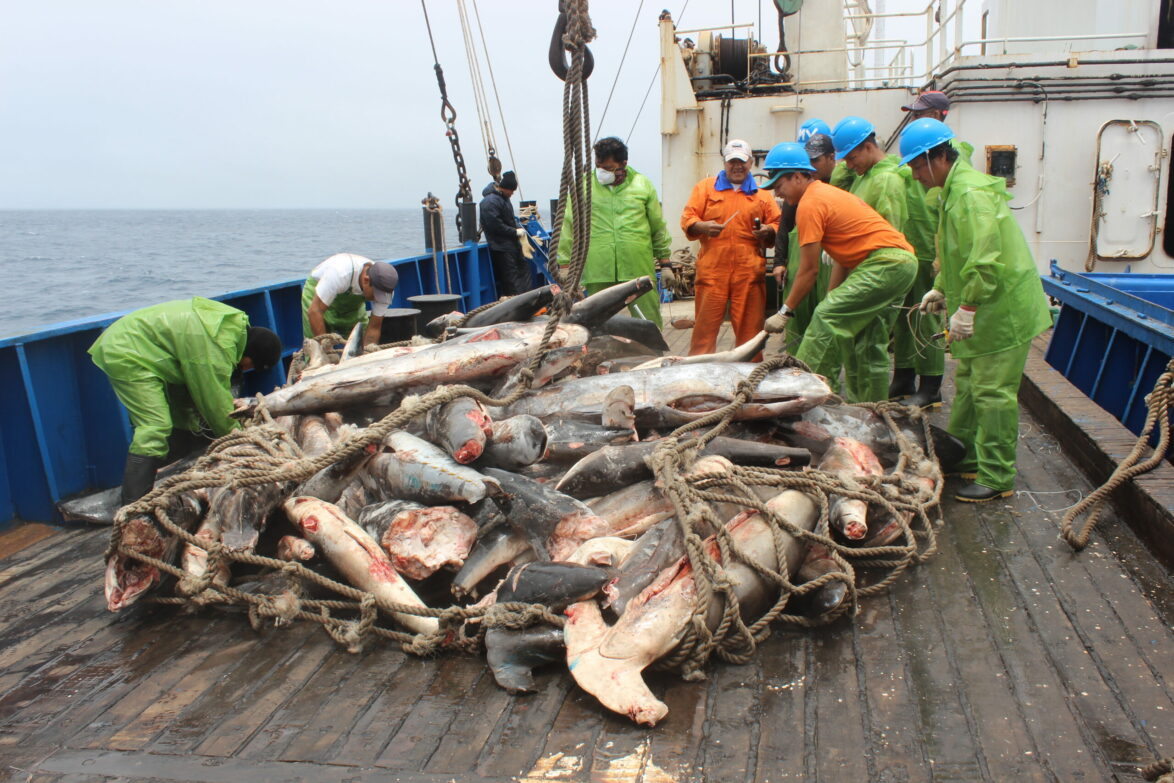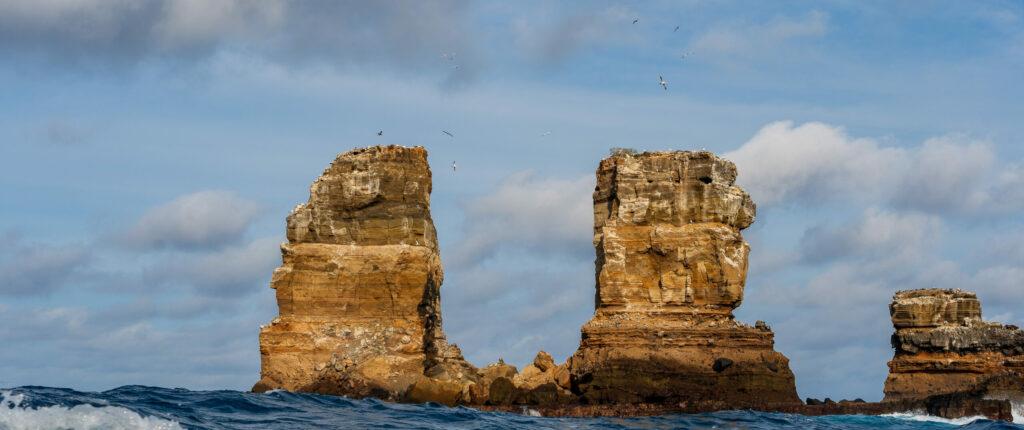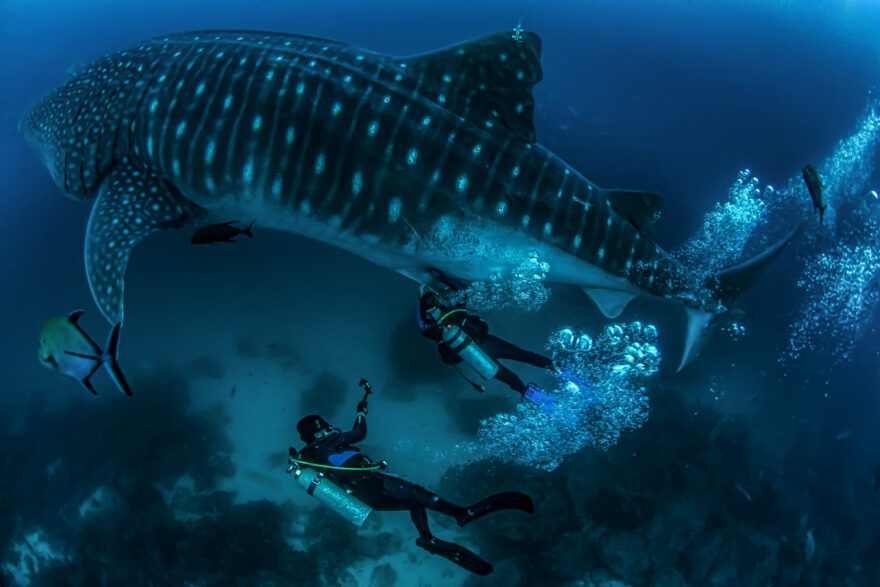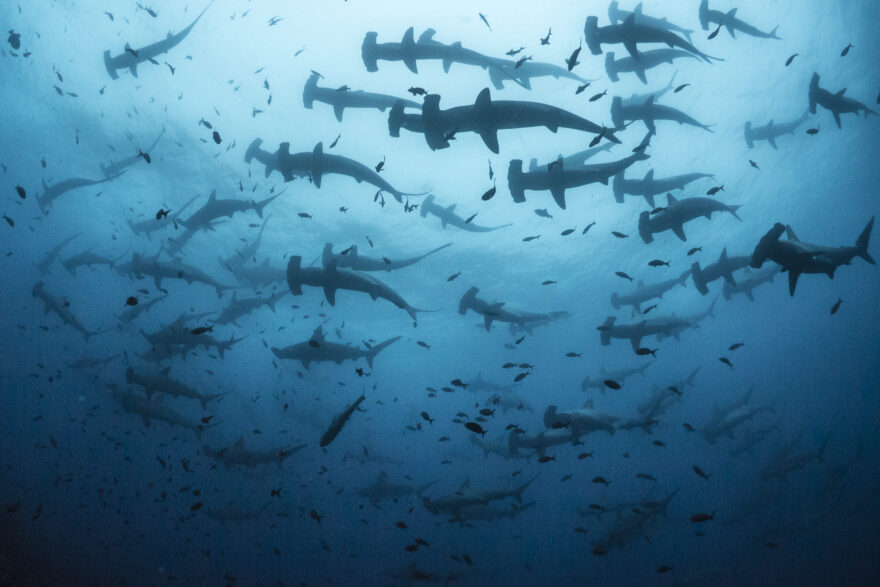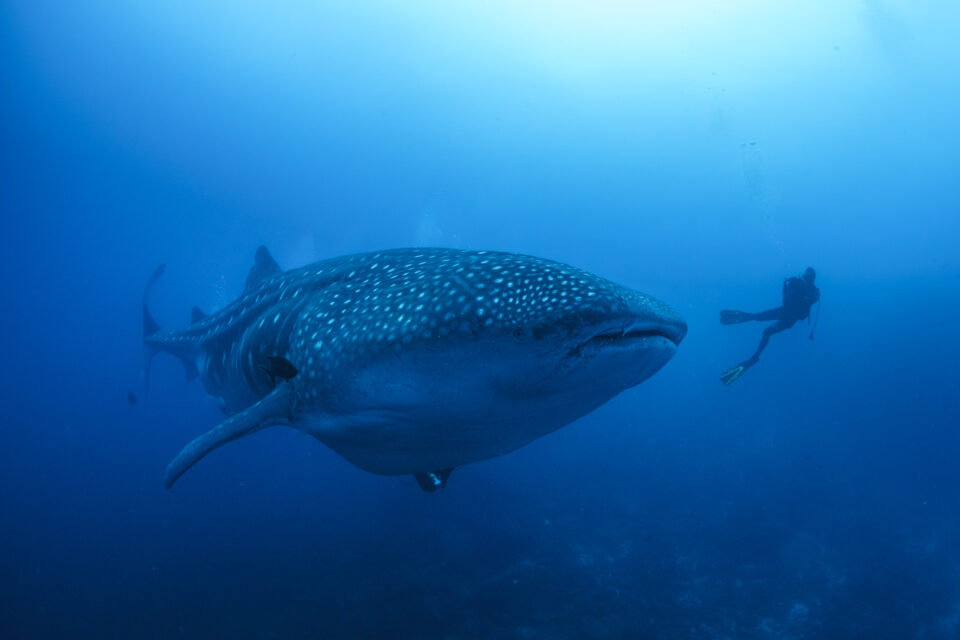
Island overview
Situated over 100 miles to the northwest of Isabela, Darwin (together with neighbouring Wolf) is the most remote part of Galapagos. The island is the tip of a submerged extinct volcano, and is only inhabited by seabirds.
The island is named after Charles Darwin, though the famous naturalist never came here; the first known landing on the island only occurred in 1964, when it was visited by helicopter. Just offshore is the islet known as Darwin’s Arch, one of the best dive sites in the Archipelago, although the arch collapsed in May 2021, and is now perhaps better described as ‘Darwin’s Pillars’.
The marine life here is exceptional, with whale sharks present between June and November, and huge schools of scalloped hammerheads. Other species present include manta rays, green turtles, dolphins and Galapagos, silky and blacktip sharks. Darwin supports populations of bird species including red-footed boobies, frigatebirds and vampire finches, and is the only island in the Archipelago where the sooty tern breeds.
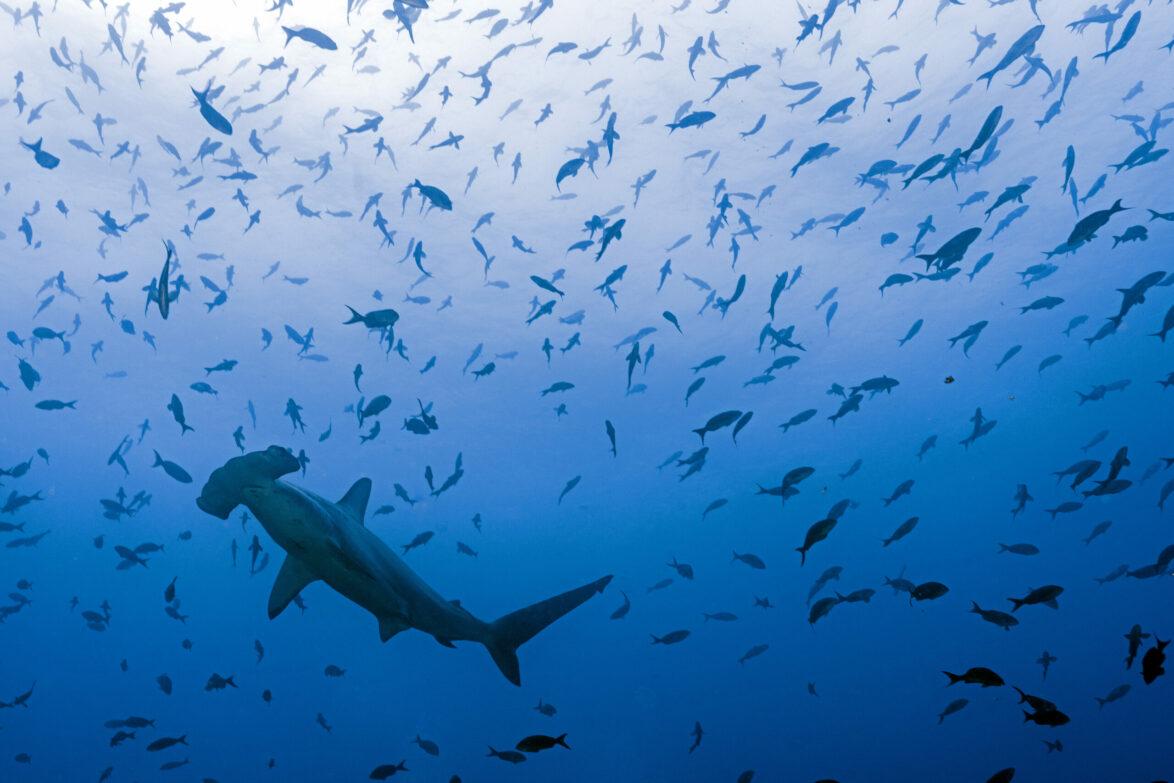
Wildlife highlights

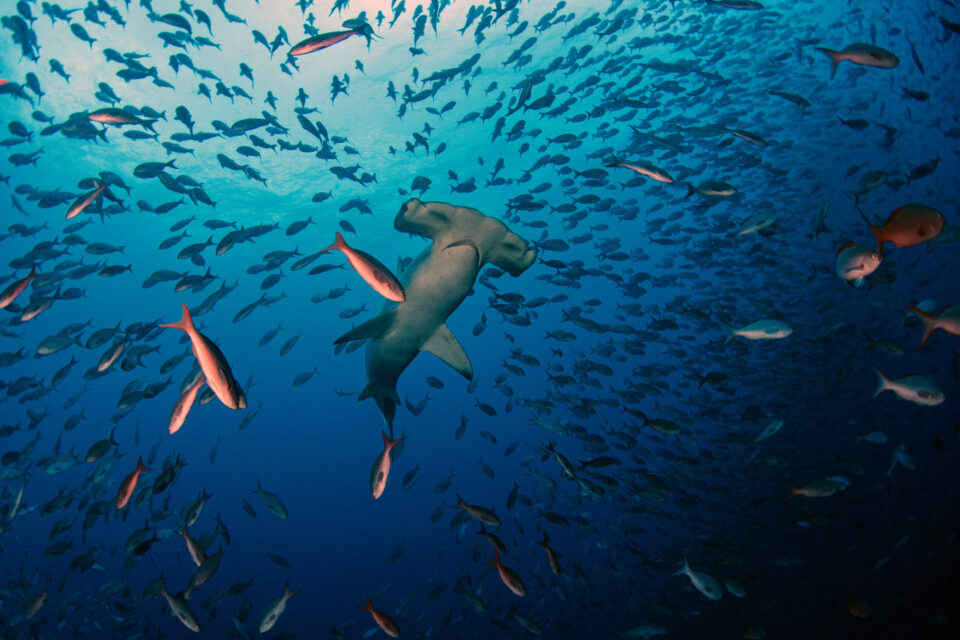
Scalloped hammerhead shark
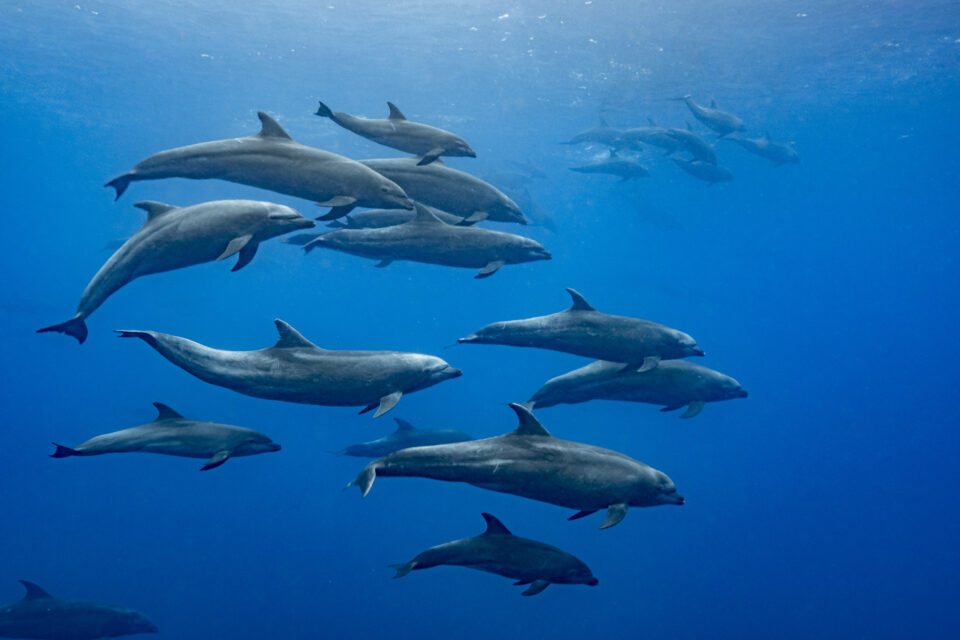
Cetaceans of Galapagos
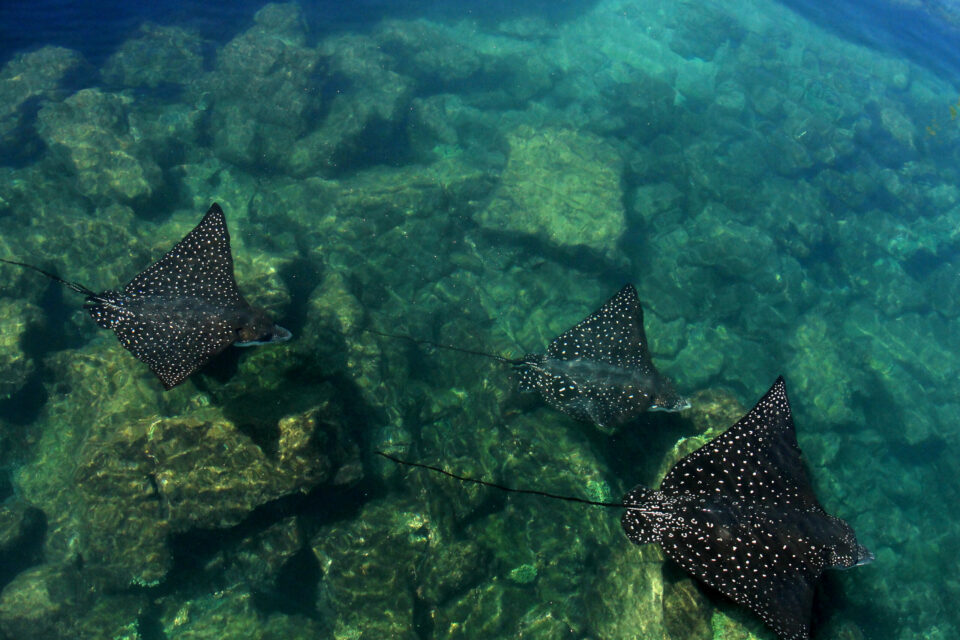
Rays of Galapagos
Conservation challenges
Darwin’s remote location, together with its abundant marine life, means that its waters are particularly vulnerable to illegal fishing activity. Unregulated dive tourism is also a concern. The Galapagos National Park maintains a floating base at nearby Wolf island to patrol the Archipelago’s northern waters.
The new Hermandad Marine Reserve, which was formally created in January 2022, is situated to the north east of Darwin and includes a 30,000 km² no take zone, giving extra protection to migratory marine species such as whale sharks and hammerheads as they move between Galapagos and Cocos Island, Costa Rica.
